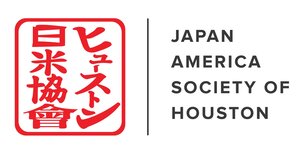On Memorial Day 2025, the Japan-America Society of Houston (JASH) joined the Galveston County Historical Commission and community members in commemorating a long-overlooked chapter of Texas history: the legacy of Japanese immigrants who helped shape the Gulf Coast more than a century ago.
In a ceremony held at Fairview Cemetery in League City—widely known for honoring veterans from the Civil War through the Korean War—a new Texas State Historical Marker was officially unveiled. The marker recognizes the contributions of Seito Saibara and the 30 Japanese settlers who arrived in Texas in 1903 and helped launch the region’s rice industry.
The dedication followed Fairview Cemetery’s annual Memorial Day commemoration, making it a fitting occasion to honor not only those who served in uniform but also those whose pioneering work laid the foundation for agricultural and cultural growth in Southeast Texas.
Many of the early settlers and their descendants, including members of the Saibara, Imai, and Ando families, remained in the area and went on to distinguish themselves in a wide range of fields. Today, 47 members of that early community are buried in a small section of Fairview Cemetery, where gravestones are inscribed in both English and Japanese—a testament to their bicultural heritage.
The historical marker was selected as part of the Texas Historical Commission’s Undertold Marker Program, a competitive initiative aimed at highlighting underrepresented narratives across the state. As noted by Julie Baker, historical marker chair of the Galveston County Historical Commission, the program ensures that important stories “are well researched, well written, and worthy of being memorialized.”
In a formal resolution issued in conjunction with the event, Harris County Commissioner Rodney Ellis acknowledged the dedication of the marker as “a powerful and long-overdue acknowledgment of the resilience, innovation, and legacy of Houston’s first Japanese settlers, whose contributions continue to shape the region to this day.”
The original Japanese settlers—led by Saibara, a former Japanese parliamentarian who was President of Doshisha University when he arrived—were invited to Texas and purchased land in Webster in the early 1900s and successfully cultivated rice using seeds provided by the Japanese government. Their success offered new employment opportunities to local residents and spurred agricultural innovation in Texas. Even as rice farming declined over time, many families transitioned to fruit production, remaining vital members of the local economy.
Despite their achievements, these settlers faced significant barriers to citizenship and endured suspicion during World War II. According to Melodey Hauch, vice chair of the Galveston County Historical Commission, it was during these challenging times that bonds between the Japanese community and local Quaker families deepened—another crucial part of this story that the marker now preserves.
“There are so many of them that came and persevered and made a good living for themselves,” Hauch said. “It was hard work, but they stayed and they made something of those rice farms—and later, their fruit orchards.”
The Japan-America Society of Houston is honored to be part of this important moment of recognition and education, and remains committed to preserving the stories that define the rich, multicultural fabric of Texas.
Marker Location: Fairview Cemetery, 901 N. Kansas St., League City, TX
Marker Program: Texas Historical Commission’s Undertold Marker Initiative
Dedication Date: Memorial Day, May 26, 2025







